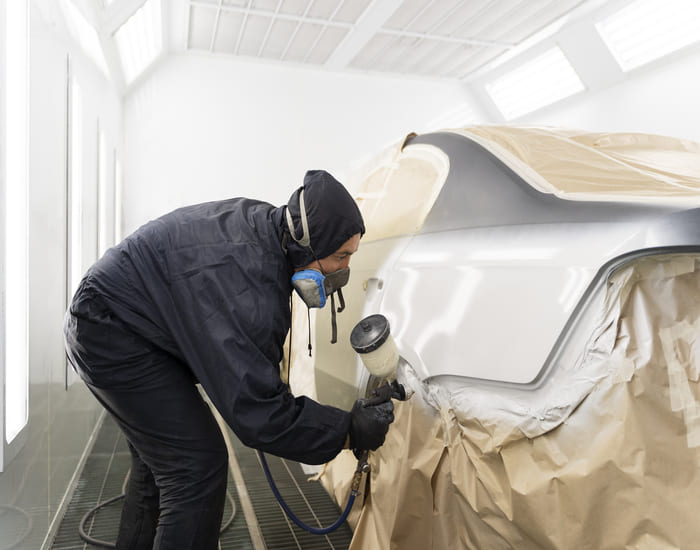Paint Protection Film (PPF) is becoming increasingly more typical in the auto-fix industry as a method for shielding auto paint from different substances. Whether you drive an extravagance sports vehicle or a family vehicle, keeping up with the exquisite allure and worth of your car relies upon your capacity to grasp PPF and its advantages. This blog explores all the topics you may be interested in learning about ppf paint protection for cars, including its advantages, application handle, support, and frequent misunderstandings.
1. What is Paint Protection Film (PPF)?
PPF car paint protection provides an immediate barrier against a few potential threats, such as sharp edges, stones, intense light, and environmental pollutants. According to the plan, the film will withstand deterioration over time and absorb impact from jetsam and flotsam. It adheres uniformly to the vehicle’s surface, maintaining the original paint job’s appearance while adding extra security.
PPF is available in a variety of thicknesses and finishes, including sparkle and matte, allowing car owners to choose a style that enhances the appearance of their vehicle. The film has a built-in self-healing feature that will cause minor flaws to disappear over time when it becomes warm. This self-healing feature ensures that even after extensive use, the car maintains its perfect appearance.
2. Benefits of PPF
Applying Paint Protection Film has advantages beyond just keeping the car looking nice. Its ability to guard against stone chips and small scrapes that may occur during regular driving is one of its main features. PPF serves as a reconciling layer that absorbs the effect without damaging the base paint. High-traffic areas, including the front bumper, hood, and side mirrors, require extra security.
Another key benefit is its ability to withstand UV rays. Extended exposure to daylight can cause paint to become brittle and blurry. PPF provides a protective shield that prevents damaging UV rays from reaching the paint, preserving the vehicle’s brilliance and diversity. Additionally, PPF is shielded from artificial contaminants such as road salt, tree sap, and bird droppings, which can destroy paint if they are not removed quickly.
3. Application Process
Applying paint protection film may require precise preparation, skill, and attention to detail. Usually, it begins with a thorough washing of the car’s exterior to ensure that there are no dirt, debris, or pollutants on it. The application of the film usually addresses any recent imperfections or scratches in the paint.
When the surface is prepared, the PPF paint protection is painstakingly cut to fit the precise locations on the car. Advanced innovation, such as computer-aided design (CAD), is used every day to create personalized designs for a perfect fit. At that time, the film is gradually brought closer to the surface, starting with the most prominent boards and moving down to the smaller, trickier sections.
The film is long and positioned during application to eliminate creases and bubbles. It is common practice to use heat to activate the adhesive and conform the film to the vehicle’s curves. Following application, excess fabric is cut, and the film is thoroughly examined for any defects. The estimated complexity and size of the car can determine how long it will take to complete the handle.
4. Maintenance and Care
Although the film is relatively transparent, proper maintenance is necessary to ensure its longevity. To keep the film clear of dirt, filth, and street debris, regular washing is essential. Utilizing a delicate fabric or wipe and a gentle, pH-adjusted cleaner can assist with forestalling scratches on the film’s surface.
Avoid using harsh synthetic materials, high-pressure washers, or grinding cleaners, as these can damage the film. It is also a good idea to avoid pausing under trees or in areas where there is a lot of action with birds, as pollutants like sap and droppings can eventually affect the way the picture looks.
It is a wonderful idea to periodically inspect the film for any indications of lifting, bubbling, or injury in order to maintain the timetable. If minor problems do arise, a skilled person can usually fix them. Many PPF installations provide support services to ensure the film stays in optimal condition.
5. Common Misconceptions
There are several misconceptions about Paint Protection Film that will influence the decisions made by prospective customers. A prevalent misconception is that PPF is only applicable to luxury or expensive cars. In actuality, PPF can benefit any car, regardless of brand or model, by providing security and enhancing its look.
Another misconception is that PPF might only be temporary and need visit replacement. With proper maintenance, high-quality PPF can last for several years while maintaining both its protective qualities and good looks. Furthermore, some acknowledge that PPF may alter the vehicle’s wrap or paint job. PPF, however, is described as being nearly undetectable and is available in many wraps to match the vehicle’s original appearance.
Finally, there is a belief that PPF is unnecessary if the car is regularly repaired or waxed. Although waxing and fixing provide some security, PPF offers a higher level of protection from physical injury and environmental toxins. The movie provides a longer-lasting paint security plan that is more detailed.
6. Cost Considerations
A few factors, including the estimated value of the vehicle, the film’s quality, and the intricacy of the setup, can significantly affect the cost of Paint Protection Film. Typically, expenses range from several hundred to several thousand dollars. Although PPF is a gamble, in the long term, it can save costs by preventing paint damage and lowering the need for repairs and repainting.
It is essential to balance the early speculation against the advantages of long-term security and the possible increase in resale value when calculating the toll. Superior PPF products and skilled installation may be more expensive up front, but they provide exceptional toughness and security. Comparing several brands and installation services will help you get the best value for your requirements.
7. Choosing the Right Installer
Choosing a reputable and skilled installer is essential to getting the best results possible with Paint Protection Film. Look for installers who have a track record of success and satisfied customers. A competent installation should provide references upon request and have a portfolio of previous work available.
It is far too important to inquire about the types of PPF products they use and the extent of their guarantee. Well-made films from reputable producers typically have far superior execution and toughness. Furthermore, a trustworthy installer should guarantee their work and be available to handle any problems that may arise after installation.
Arranging a meeting with prospective installers might help you better assess their preparedness and ensure that you have faith in their abilities. Selecting the proper installation is essential to guaranteeing that your PPF is correctly linked and provides the desired level of security.
8. Future Trends in PPF Technology
Paint Protection Film is advancing with unutilized improvements and enhancements as innovation moves forward. Upcoming trends in PPF innovation include the development of self-healing films with enhanced characteristics, like increased resilience against natural pollutants and scratches. These developments suggest that the movie will provide more significant assurance and maintain its look over time.
Additionally, advances in film technology might result in additional personalization options, giving car owners access to a wider variety of surfaces and covers. Innovations in cement technology may also significantly improve PPF’s accessibility and usability by facilitating its establishment and removal.
The Bottom Line
Paint Protection Film (PPF) provides a comprehensive solution for safeguarding your car’s paint and texture. You may make an informed decision assuming PPF car protection film is the best option for your car by keeping an eye on the advantages, application models, maintenance requirements, and ongoing faults. The PPF project has the potential to yield significant long-term benefits, such as improved protection against damage, increased resale value, and lower support expenses. Selecting a premium movie and a reliable installer will ensure that you receive the best results possible. Staying up to date with the latest trends and advancements in PPF technology will let you take full advantage of this profitable defensive arrangement.

